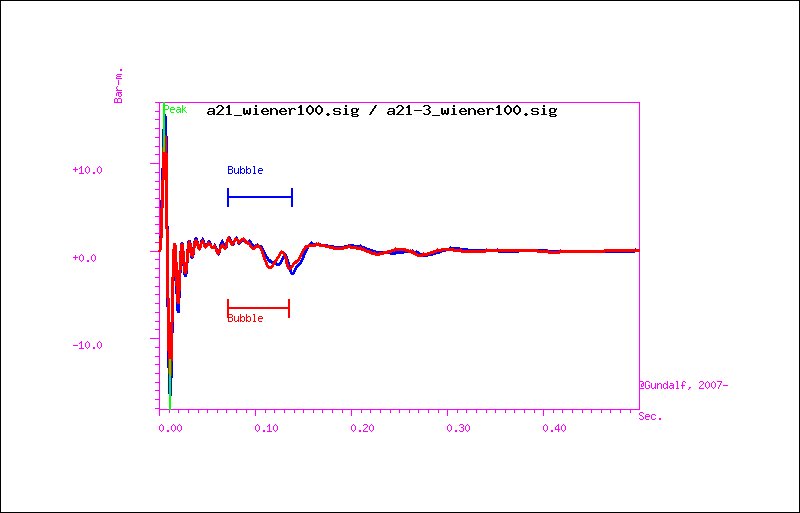Drop-out specifications
Introduction
This is one of a growing number of discussion pages which treats a particular subject in a little more depth than is possible in a FAQ.
Drop-outs
Drop-out specifications are often perceived as a black art. They vary very considerably and they frequently seem to bear little relationship with geophysical objectives or even what can realistically be achieved. Applying tighter ones than necessary can be very counter-productive in boat down-time.
Originally, a drop-out specification might just consider the maximum number of guns to drop out which has less than some specified effect on the primary to bubble ratio or peak to peak amplitude. So, for example, a maximum drop of 10 percent might be specified or perhaps a minimum peak to peak of 50 bar-m within some specified bandwidth. As the industry has become more sophisticated, so have the specifications and it is now common to have drop-out specifications in the frequency domain or specified in terms of cross-correlation so they are a little less accessible to common understanding.
Frequency domain drop-out specifications
Typical specifications might constrain the maximum ripple or the average spectral drop within a specified bandwidth. So for example, the specification might read that no combination of gun drop-outs should lead to an average drop of more than 3db in the bandwidth 10-60Hz. We can ask roughly how many guns would this correspond to ? To calculate this, recall that a factor of 2 is just over 6db. 3db is factor of approximately 1.4. In other words, if we have a 32 gun array in which all guns contribute roughly the same, we can lose (0.4/1.4) * 32 or about 9 guns and still satisfy the db. limit. Of course all guns do not contribute the same but it is quite a good approximation as the peak to peak output of a gun only varies as the cube root of the volume so they are much closer in performance than they might appear. For example a 300 cuin gun might generate 7 bar-m or so peak to peak but a 50 cuin gun with everything else being the same might generate 5 bar-m.
From this we can expect roughly the following losses:-
| Percent of guns lost | Expected drop in average db level in typical band |
|---|---|
| 5 percent | 0.45 |
| 10 percent | 0.92 |
| 15 percent | 1.41 |
| 20 percent | 1.94 |
Although interaction causes these values to vary, they do not vary that much in general, and quoted drops of more than about 50% higher than these limits should be viewed with caution.
Cross-correlation limits
Sometimes specifications might be made for the minimum value of cross-correlation of the array with drop-outs against the full array. These specifications may be unrealistically high, such as 0.998. In fact predictive deconvolution in processing can comfortably balance rather larger departures than this as can be seen in the following experiment where a 21 gun array and the same array with 3 of the largest guns dropped out are compared after Wiener deconvolution and 3-128Hz bandpass filtering. In this case, the cross-correlation between the full and dropped-out array is only 0.99.
In practice, to minimise expensive down-time, drop-out specifications should reflect the full processing sequence which will be applied and this will generally ameliorate any field differences significantly.
| Comparison of signatures after Wiener and bandpass filtering |  |
| Comparison of spectra after Wiener and bandpass filtering |  |